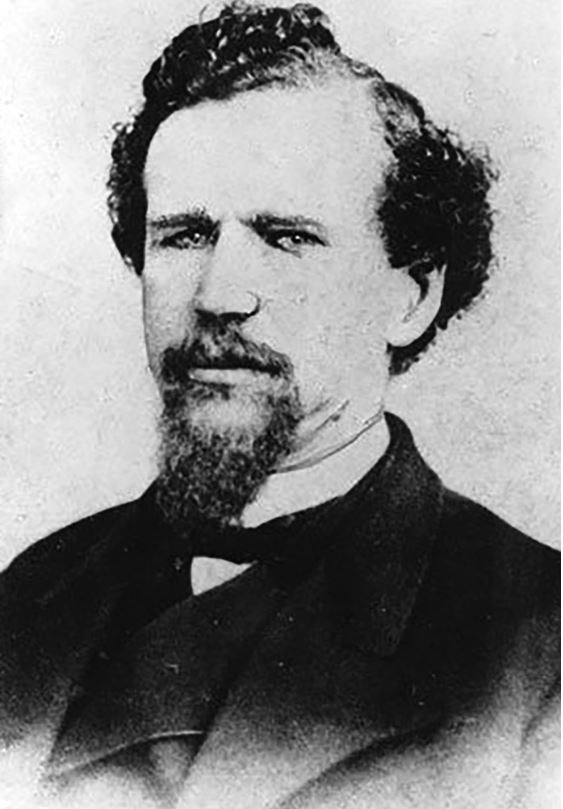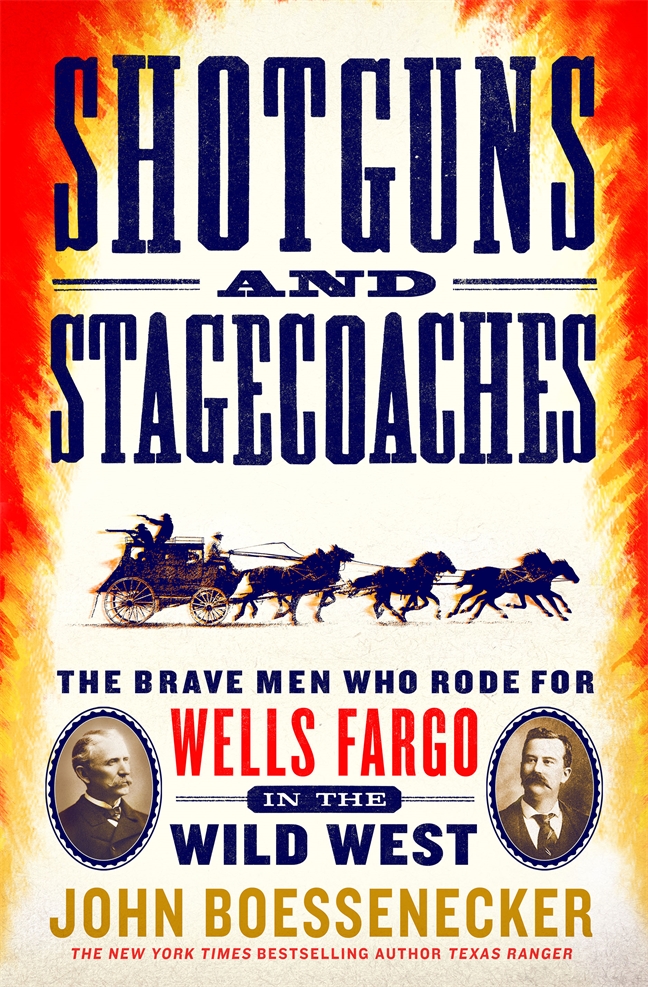by John Boessenecker
For fifteen years, Henry Johnson had his hands full as Wells Fargo’s pioneer detective. The company built its reputation on safety and security. From the time of its founding, it guaranteed delivery and paid its customers for all losses suffered in transit, whether due to theft, fire, or accident. The vast riches carried by the company were a magnet for robbers, and it quickly became evident that the company needed detectives to investigate thefts and recover stolen property. A common misconception is that the famous western lawman James B. Hume was the first Wells Fargo detective. In fact, San Francisco police officers Isaiah Lees, Leonard Noyes, and James Gannon, as well as Sacramento lawmen Dan Gay and Charles P. O’Neil, all worked as Wells Fargo sleuths long before Hume’s start in 1873.
It was during the Gold Rush of the 1850s that Wells Fargo officials hired Henry Johnson as their first detective. Born in Glasgow, Scotland, in 1818, he was a lifelong law officer. Johnson joined the Glasgow police as a young man, in about 1840, and rose to the rank of detective at a time when the profession of policing was in its infancy. He later emigrated to Australia, where he served as a police detective in Sydney and Melbourne. Johnson and his young bride, Elizabeth, sailed by clipper ship to San Francisco in 1855. Within a year, he became a special policeman, paid by private businesses to protect their property.
American policing was then very new. Before 1845, there were no organized, professional police forces in the United States, for law enforcement had traditionally been handled by volunteer watchmen at night and by constables by day. As eastern communities became urban, the old system could no longer cope with the booming population and the resulting increase in crime, social unrest, and rioting. Philadelphia and New York City were among the first cities to form full-time police forces manned by paid officers. Soon these departments were divided into patrol divisions for the prevention of crime and detective bureaus for the investigation of crime. The latter became known as “detective police.” The result was a rapid rise in urban police professionalism.

San Francisco Police Detective Isaiah W. Lees, about 1860. He worked with Henry Johnson as a Wells Fargo detective. (Author’s collection)
But because of the transient and unstable nature of frontier communities, professional policing developed far more slowly in the American West. Only in San Francisco, where a small group of highly experienced career officers controlled its police department from the Gold Rush until the end of the century, did law enforcement reach a degree of professionalism by the late 1850s. There, Henry Johnson’s experience and talent as an investigator quickly became apparent. He was appointed a San Francisco police detective and worked closely with Isaiah W. Lees, destined to become one of America’s greatest sleuths. Johnson and Lees handled countless cases, from small-time thefts to major crimes and homicides. In that freewheeling era, on-duty San Francisco police frequently performed private detective work for banks, express companies, and merchants. Because American law enforcement was so new, clear rules separating public and private policing were often nonexistent.
Although Johnson later said that he performed his initial detective work for Wells Fargo in 1855, newspapers did not report his first such case until two years later. On the night of February 1, 1857, a thief entered the Wells Fargo office in Fiddletown, in the Mother Lode country. The office was located in a corner of the United States Hotel, owned by Jerry Kendall, and the safe rested at one end of the bar. The burglar opened it and stole nine thousand dollars in gold dust and coin. Because the safe was undamaged, the Wells Fargo agent suspected that the thief either picked the lock or used a false key. The loss caused an uproar in Fiddletown. Because of the lack of effective law enforcement, vigilance committees were very active during and after the Gold Rush. A band of vigilantes seized two strangers and strung them up in an effort to choke out a confession. The pair insisted on their innocence and were set free.
Wells Fargo officials then sent Henry Johnson and Isaiah Lees to Fiddletown to investigate. They found a typical rough gold camp in which saloons outnumbered every other business. One-third of its population of one thousand was Chinese. The camp had been founded in 1849 by Missourians. “They are always fiddling,” declared one of the founders. “Call it Fiddletown.” Stagecoaches stopped in front of the United States Hotel, the most imposing building in town and one of the few with glass windows. According to an early account, “The bar-room was also sitting room, dining room, and bedroom, the beds being potato sacks stretched across poles, furnished with blankets, but no pillows, a man’s boots being expected to serve that purpose. The floor was the original red soil, sprinkled, swept, and trampled every day.”

Shotguns and Stagecoaches: The Brave Men Who Rode for Wells Fargo in the Wild West
The company’s superintendent, Samuel Knight, went to Fiddletown also and promptly repaid the owners of the stolen gold. Soon after Knight and the detectives arrived, a lynch mob led by the Fiddletown justice of the peace, Stephen Kendall—a brother of the hotelkeeper—seized another suspect, named Stepperfield, and dragged him to the outskirts of town. He denied any involvement “and expressed the fear that if he was hung it would kill his mother and sister.” He asked one of the mob to write down his last words and send them to his mother. When one of the lynchers tried to comply, others shoved him aside and exclaimed, “The man had better be praying, for his time is mighty short.” Stepperfield was then strung up until he lost consciousness, then let down. This happened three times, until a local doctor and a deputy sheriff showed up and cut him down. He lived but was permanently paralyzed. It turned out that Stepperfield had had nothing to do with the theft.
Johnson and Lees ignored the vigilantes’ primitive attempts to solve the crime by strangulation, and they soon left Fiddletown to pursue a lead in Sacramento. While they were gone, a loafer known as “Drunken Joe” came forward with crucial information. He had been allowed to sleep in a room next to the hotel bar, and on the night of the theft, he awoke and saw the justice, Kendall, remove several sacks from the safe and hand them to a carpenter named Leroy Warden and another man, whom he did not know. Because Kendall was authorized to open the safe, Drunken Joe thought nothing of it until he saw the justice leading the lynch mob. Justice Kendall, Leroy Warden, and a ruffian called “Big John” were all jailed. One of them revealed the location of the gold, which was found hidden under a brick oven behind the hotel. Kendall and Warden were brought to trial in June and both were acquitted, illustrating that justice was extremely uneven during the Gold Rush: Innocent men were strangled half to death by a mob, while the guilty culprits went free. Though Henry Johnson did not crack the case, it marked the beginning of many investigations he would make for Wells Fargo.
JOHN BOESSENECKER, a San Francisco trial lawyer and former police officer, is considered one of the leading authorities on crime and law enforcement in the Old West. He is the award-winning author of several books, including the New York Times bestselling Texas Ranger. In 2011 and 2013, True West magazine named Boessenecker Best Nonfiction Writer. He has appeared frequently as a historical commentator on PBS, The History Channel, A&E, and other networks.
The post The First Wells Fargo Detective appeared first on The History Reader.
Powered by WPeMatico